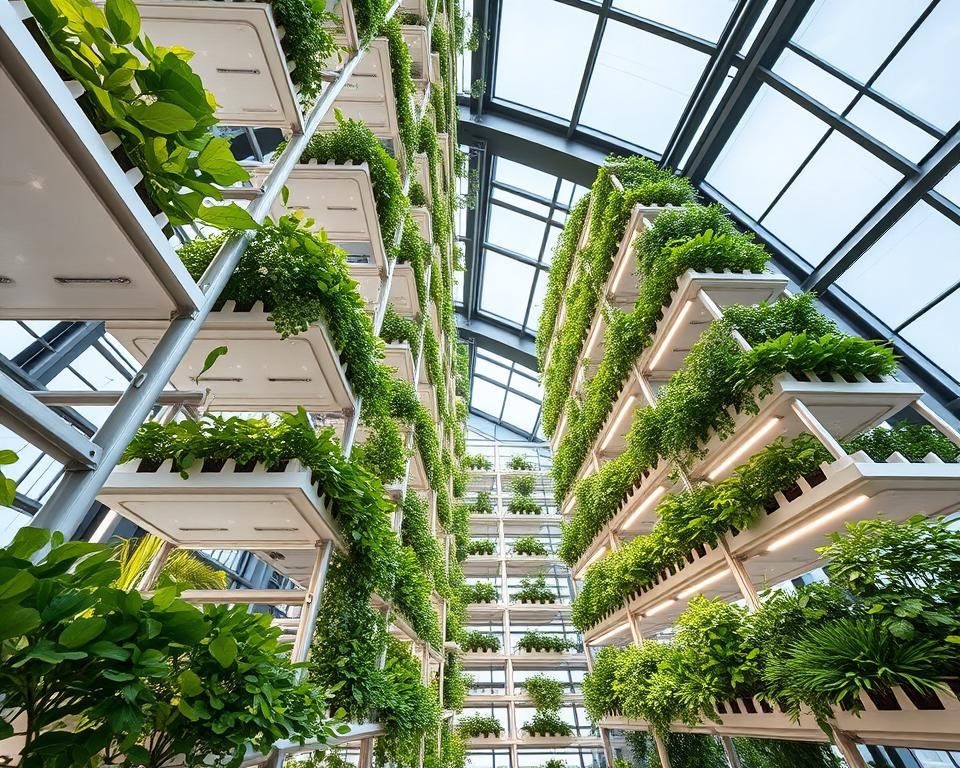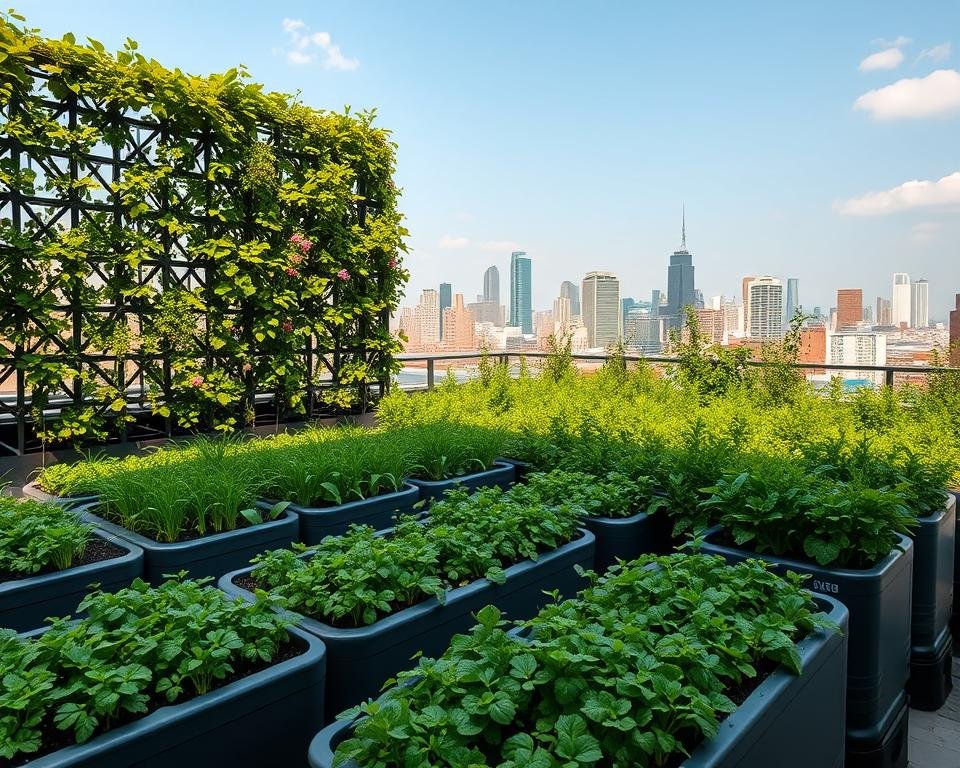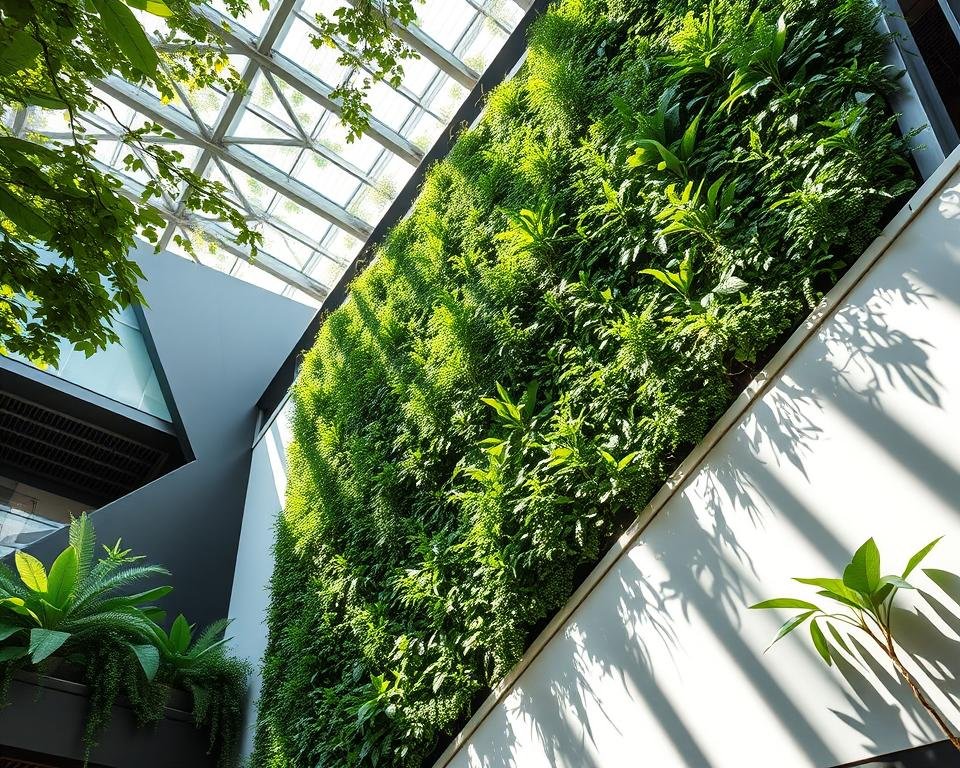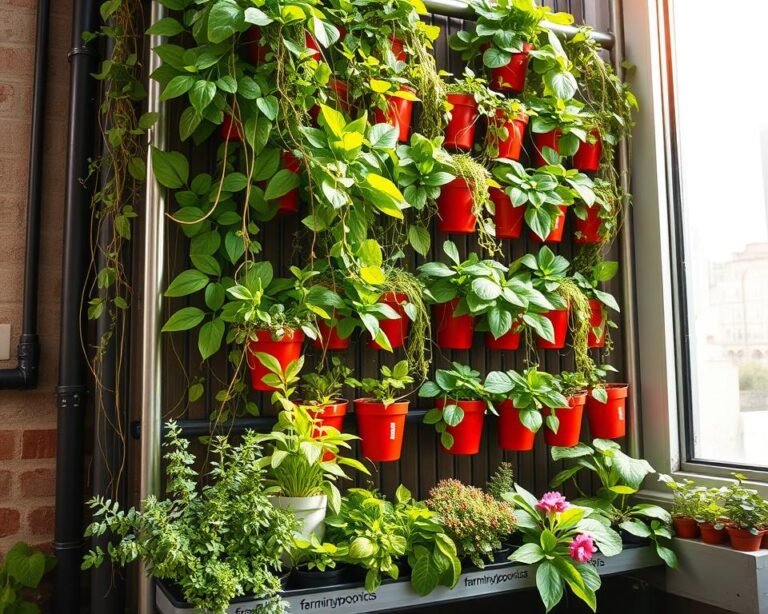Beyond the Basics: Innovative Structures in Vertical Gardening
In my small urban apartment, the bare concrete walls felt cold and empty—until I discovered vertical gardening. With innovative structures, these living walls transform tight spaces into vibrant works of art that breathe life into city homes.
Vertical gardening is rapidly gaining popularity among urban residents, with the market expanding at an estimated 8.5 % CAGR from 2021 to 2028. Thanks to innovative structures—from modular panels to space‑saving trellis frames—modern designs are redefining how we integrate greenery into dense environments.
By adopting these innovative structures, you can turn any blank wall into a lush oasis that uses up to 50 % less space than traditional gardens while purifying the air and reviving your living area.
Key Takeaways
- Vertical gardens maximize limited urban spaces
- Innovative structures create living wall solutions
- Modern design integrates nature into architectural spaces
- Vertical gardening supports urban biodiversity
- Advanced technologies enhance plant growth and maintenance
Understanding Modern Vertical Garden Architecture
Vertical gardening is a new way to make cities greener. It changes how we design buildings and use space. These systems turn small areas into beautiful, useful spaces that make cities more alive.
The growth of vertical gardens is amazing. They’ve moved from simple window boxes to complex green walls. French botanist Patrick Blanc started it all in 1988 with a green wall in Paris.
Key Components of Contemporary Garden Structures
Modern vertical gardens have key parts:
- Innovative support systems that use space well
- Smart irrigation for saving water
- Plants with shallow roots
- Green materials that are good for the planet
Environmental Impact Considerations
Vertical gardens are great for cities. They:
- Make the air cleaner by catching pollutants
- Lower the city’s temperature
- Help keep buildings warm or cool
- Give homes to city animals
By 2050, most people will live in cities. Vertical gardens are key to making cities sustainable. They turn hard, grey areas into green, living spaces.
Innovative Structures in Vertical Agriculture

Vertical agriculture is a new way to grow food in cities. It uses building information modeling (BIM) to create smart growing systems. These systems stack crops up high, making more food in less space.
The main benefits of vertical farming include:
- Less water use (up to 98% less than old farming)
- Year-round growing
- More land use
- No seasonal limits
Prefabricated structures are changing vertical farming. Smart materials help control the environment, making perfect growing spots. This way, farmers can grow much more than before.
| Technology | Water Efficiency | Annual Yield Increase |
|---|---|---|
| Vertical Farming | 90% reduction | 240x traditional farms |
| Aeroponics | 90% less water | 300% faster growth |
| Hydroponic Systems | 70% reduction | 200% increased productivity |
As cities get bigger, vertical farming is a green answer to food needs. It uses new tech like BIM and smart materials. These structures are changing how we grow food today.
Living Wall Technologies and Implementation
Vertical gardening has changed urban spaces with new engineering and manufacturing. It starts with understanding how these green walls change areas and offer many benefits.

Today’s living walls use smart design to make plant systems work in small city areas. These walls are not just pretty; they also help the environment.
Professional Installation Methods
Setting up a living wall needs careful planning and precision. Important steps include:
- Strong metal frames for stability
- Waterproof plastic backing
- Felt layers for keeping moisture in
- Systems for watering plants
“A well-designed living wall is a testament to human ingenuity in harmonizing technology and nature.” – Green Design Innovators
Maintenance Requirements and Systems
Keeping a living wall healthy means regular checks and special care. Experts visit every month to make sure plants and systems are doing well.
- Checking nutrient levels
- Automated watering systems
- Sensors for climate and moisture
- Checking plant health
Plant Selection Strategies
Picking the right plants is key for a living wall’s success. Think about light, humidity, and the environment when choosing plants.
Living walls bring big benefits, like:
- Lowering indoor air pollution by up to 87%
- Boosting city biodiversity
- Reducing energy use in buildings
- Improving mental health with nature
Living walls show how new engineering and manufacturing can lead to better urban design.
Smart Design Solutions for Urban Spaces

Urban areas are changing thanks to new architectural designs. These designs focus on sustainable construction. Vertical gardening is a key part of this change, solving space and environmental issues.
Smart design is changing how cities use green spaces. New technologies help urban planners create spaces that are both creative and practical. Here are some important innovations:
- IoT-enabled vertical garden systems that optimize plant growth
- Automated irrigation and monitoring technologies
- Integrated building designs that incorporate living walls
- Smart sensors for environmental performance tracking
These smart approaches can greatly benefit urban areas. Studies show smart buildings can cut energy use by 30%. Adding vertical gardens improves looks and helps the environment a lot.
Cities are moving towards sustainable solutions. They use advanced tech to:
- Reduce carbon footprint by 40%
- Improve air quality
- Enhance occupant well-being
- Create more resilient urban ecosystems
The future of urban design is about combining tech, sustainability, and creativity. As cities grow, vertical gardening and smart design will be key. They help make cities better, more efficient, and green.
The Future of Vertical Gardening Structures
Urban areas are changing fast, and vertical gardening is leading the way. It’s making us rethink how we grow food and design cities. New smart materials are turning walls into living spaces that help the environment.
New technologies are changing vertical gardening in big ways. Scientists are working on new structures that are more than just gardens. They use:
- AI to control growing conditions
- Self-sustaining ecosystems
- Technologies that adapt to the climate
- Renewable energy to power them
Urban planners are now thinking outside the box. They’re designing skyscraper farms and underground gardens. These ideas tackle big city problems like:
- Ensuring food for everyone in crowded cities
- Adapting to climate change
- Creating sustainable cities
- Improving air quality
Vertical gardening is more than just pretty. By 2050, most people will live in cities. These smart gardens turn unused space into green areas. They help make cities healthier and more resilient.
Conclusion
Vertical gardening is a game-changer for cities. It shows how new designs can change urban areas. These designs work for homes and businesses, tackling city problems.
Innovative structures do more than look good. They can make cities healthier by improving air and cooling them down. They also help animals and plants thrive.
Vertical farming is a big step towards a greener city life. You can help by trying new designs and picking the right plants. Every project makes cities better for the environment.
Your work is key to making cities better. Using new designs and garden tech can change how cities and nature connect. The future of cities needs smart, green ideas that mix tech, design, and nature.







